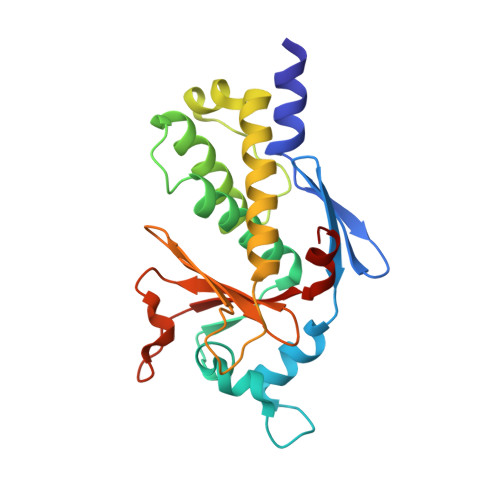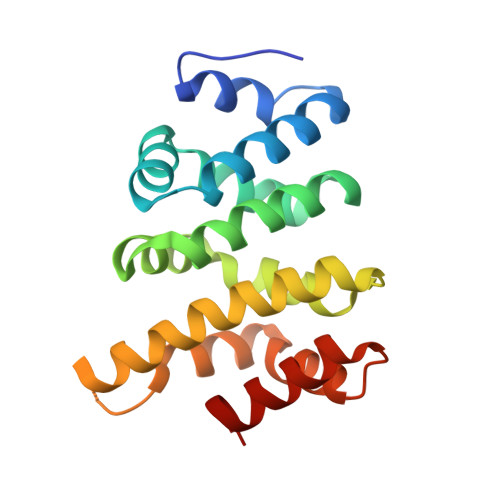Ebola Virus VP24 Targets a Unique NLS Binding Site on Karyopherin Alpha 5 to Selectively Compete with Nuclear Import of Phosphorylated STAT1.
Xu, W., Edwards, M.R., Borek, D.M., Feagins, A.R., Mittal, A., Alinger, J.B., Berry, K.N., Yen, B., Hamilton, J., Brett, T.J., Pappu, R.V., Leung, D.W., Basler, C.F., Amarasinghe, G.K.(2014) Cell Host Microbe 16: 187-200
- PubMed: 25121748
- DOI: https://doi.org/10.1016/j.chom.2014.07.008
- Primary Citation of Related Structures:
4U2X - PubMed Abstract:
During antiviral defense, interferon (IFN) signaling triggers nuclear transport of tyrosine-phosphorylated STAT1 (PY-STAT1), which occurs via a subset of karyopherin alpha (KPNA) nuclear transporters. Many viruses, including Ebola virus, actively antagonize STAT1 signaling to counteract the antiviral effects of IFN. Ebola virus VP24 protein (eVP24) binds KPNA to inhibit PY-STAT1 nuclear transport and render cells refractory to IFNs. We describe the structure of human KPNA5 C terminus in complex with eVP24. In the complex, eVP24 recognizes a unique nonclassical nuclear localization signal (NLS) binding site on KPNA5 that is necessary for efficient PY-STAT1 nuclear transport. eVP24 binds KPNA5 with very high affinity to effectively compete with and inhibit PY-STAT1 nuclear transport. In contrast, eVP24 binding does not affect the transport of classical NLS cargo. Thus, eVP24 counters cell-intrinsic innate immunity by selectively targeting PY-STAT1 nuclear import while leaving the transport of other cargo that may be required for viral replication unaffected.
Organizational Affiliation:
Department of Pathology and Immunology, Washington University School of Medicine, St Louis, MO 63110, USA.
















